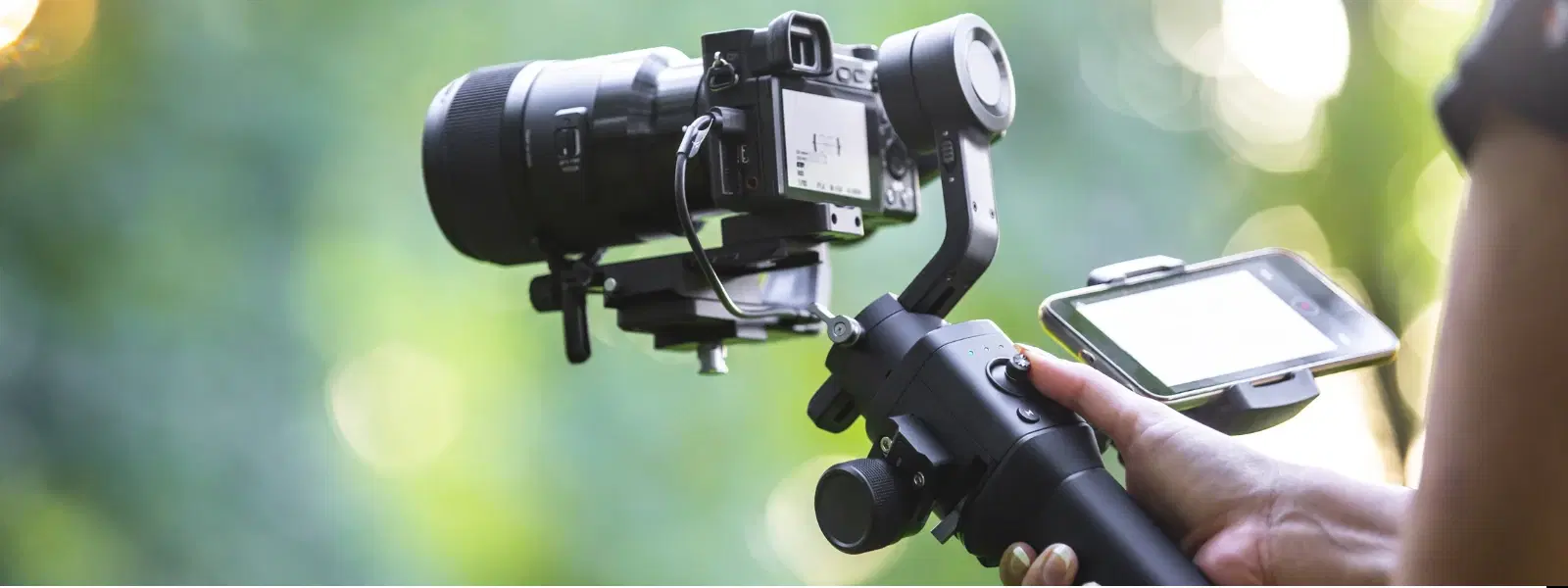
Consumer Electronics
•06 min read
-811ecd88-361a-428a-bc3e-043ff8e234e7.png&w=3840&q=75)
In today's world of content creation, having smooth, steady video footage can make all the difference when sharing your story. Whether you are a vlogger capturing life's spontaneous moments or a professional content creator, a reliable stabilisation tool is essential. This blog post offers an in-depth comparison between the benefits of a tripod gimbal for phone and a smartphone gimbal, helping you decide which is best suited to your needs.
A gimbal is a device that stabilises your phone or camera during movement, ensuring you capture smooth, shake-free videos. It works by using motors and sensors to counteract unwanted motion. Whether you refer to it as a phone stabilizer, mobile gimbal, camera gimbal or handheld gimbal, its purpose remains the same: to provide a stable platform for your device. Notably, many modern gimbals come with 3-axis gimbal technology, which enhances stability even further.
Stabilisation dramatically improves video quality by reducing camera shake, making your footage seem more professional. This technology is crucial for various use cases, from ad-hoc filming to professional videography, and even for casual capturing of life’s memorable moments. A reliable video stabilizer allows you to experiment with creative angles and cinematic movements, ensuring every shot is picture perfect.
A tripod gimbal for phone uniquely combines the functions of a stabiliser and a phone tripod. This dual functionality means you can easily switch between dynamic filming and setting up a stationary shot without fuss. The phone tripod feature allows for hands-free shooting, making it a prized tool for those shooting tutorials, product reviews or vlog content. The stabilisation offered by such a device not only enhances your video quality but also ensures robust performance even in static setups.
Tripod gimbals are particularly beneficial for vloggers who often alternate between handheld motions and stationary filming. They provide the flexibility to capture stable shots when needed, ensuring crisp visuals for product showcases, tutorials, or interviews. If you require a tool that can transition from dynamic to still shots seamlessly, the tripod gimbal for phone is a commendable choice.
-f8fe8dd9-cfbd-45ca-9f27-d52941751609.png&w=3840&q=75)
The smartphone gimbal is engineered for portability and advanced dynamic stabilisation. This type of gimbal typically includes 3-axis stabilisation, automated tracking features and app integrations that enhance its usability. Its lightweight and compact design makes it perfect for on-the-go filming, allowing creators to capture professional-quality videos no matter where they are. Whether you call it a mobile gimbal or a handheld gimbal, its versatility ensures your filming experience remains smooth and efficient.
For those who often film on the move, the smartphone gimbal is unbeatable. It is ideal for travel bloggers, adventure seekers, or anyone working in dynamic environments. The advanced features enable creative shots that might include cinematic movements and complex angles. This makes it an excellent choice for filmmakers seeking innovative ways to showcase their perspective.
Pro Tip from Tata Neu: When choosing a gimbal, consider your primary use case. If you frequently shoot stationary videos or need hands-free operation, a tripod gimbal for phone might be your best bet. For dynamic and creative shots on the go, a smartphone gimbal offers unmatched portability and advanced features.
While both devices provide excellent stabilisation, the tripod gimbal for phone takes a slight edge when it comes to versatility with its integrated phone tripod feature. This makes it ideal for situations where static shots are necessary. In contrast, the smartphone gimbal shines with its advanced stabilisation technology and portability, making it the go-to option for dynamic, on-the-move filming setups.
Setting up a tripod gimbal is straightforward, especially if you require a brief pause between dynamic and static shooting modes. Its design supports quick adjustments and a reliable grip for varied shooting scenarios. On the other hand, smartphone gimbals come with user-friendly interfaces and intuitive controls that allow for rapid deployment, ensuring you never miss a moment.
When considering the cost, there is a noticeable difference between the two products. A tripod gimbal for phone may be priced slightly higher due to its multifunctional design, yet offers long-term benefits for users who prioritise hands-free and static filming. In contrast, the smartphone gimbal tends to be more economically appealing for those primarily interested in advanced stabilisation features and portability. In both cases, the investment can be easily justified by the quality of footage produced and the overall enhancement in your content creation process.
-a70a88f6-b4df-43e1-b990-7735c23fce79.png&w=3840&q=75)
The primary difference is that a tripod gimbal for phone includes a built-in tripod feature for hands-free operation, whereas a smartphone gimbal is designed for more dynamic, on-the-go filming with superior portability.
Yes, the tripod gimbal for phone is excellent for vlogging, especially if you need to switch between stationary and handheld shots seamlessly.
Most smartphone gimbals are compatible with a large range of devices; however, it is advised to check the compatibility list specific to the model you choose.
For capturing smooth, professional-quality videos, a 3-axis gimbal offers superior stabilisation, particularly in dynamic shooting environments.
Absolutely, even casual filmmakers can enjoy improved video quality and creative flexibility by investing in a reliable gimbal stabiliser.
Shopping on platforms like Tata Neu offers additional benefits such as NeuCoin earn opportunities and Express Delivery on orders placed before 6 PM. These features make purchasing technology and other consumer gadgets a hassle-free experience, ensuring you not only receive advanced technology at competitive prices but also benefit from unmatched after-sales support and customer care. This seamless service is designed to enhance your content creation journey by providing quick delivery and expert guidance throughout your shopping experience.
In summary, both the tripod gimbal for phone and the smartphone gimbal bring distinct advantages to your video production setup, whether you're capturing static or dynamic footage. The choice truly depends on your specific filming needs and shooting style, along with factors like portability, ease-of-use and budget considerations. Enjoy the assurance of professional-level footage with either option and take your content to the next level.